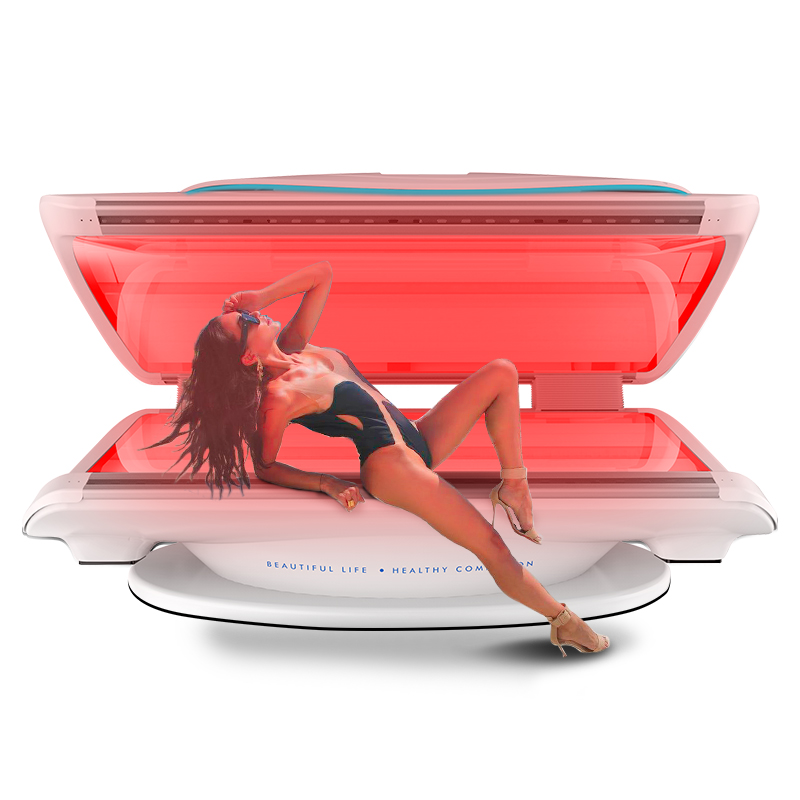LIGHT THERAPY & TANNING KNOWLEDGE
-
5 ways to minimise harmful blue light in your life
Blue light (425-495nm) is potentially harmful to humans, inhibiting energy production in our cells, and is especially harmful to our eyes. This can manifest in the eyes over time as poor general vision, especially nightime or low brightness vision. In fact, blue light is well established in the s...Read more -
Is there more to light therapy dosing?
Light therapy, Photobiomodulation, LLLT, phototherapy, infrared therapy, red light therapy and so on, are different names for similar things – applying light in the 600nm-1000nm range to the body. Many people swear by light therapy from LEDs, while others will use low level lasers. Whatever the l...Read more -
What dose should I aim for?
Now that you can calculate what dose you are getting, you need to know what dose is actually effective. Most review articles and educational material tends to claim a dose in the range of 0.1J/cm² to 6J/cm² is optimal for cells, with less doing nothing and much more cancelling out the benefits. ...Read more -
How to calculate light therapy dose
Light therapy dose is calculated with this formula: Power Density x Time = Dose Fortunately, most recent studies use standardised units to describe their protocol: Power Density in mW/cm² (milliwatts per centimeter squared) Time in s (seconds) Dose in J/cm² (Joules per centimeter squared) For lig...Read more -
THE SCIENCE BEHIND HOW LASER THERAPY WORKS
Laser therapy is a medical treatment that uses focused light to stimulate a process called photobiomodulation (PBM means photobiomodulation). During PBM, photons enter the tissue and interact with the cytochrome c complex within mitochondria. This interaction triggers a biological cascade of even...Read more -
How can I know the strength of the light?
The power density of light from any LED or laser therapy device can be tested with a ‘solar power meter’ – a product that is usually sensitive to light in the 400nm – 1100nm range – giving a reading in mW/cm² or W/m² (100W/m² = 10mW/cm²). With a solar power meter and a ruler, you can ...Read more -
A history of light therapy
Light therapy has existed as long as plants and animals have been on the earth, as we all benefit to some degree from natural sunlight. Not only does the UVB light from the sun interact with cholesterol in the skin to help form vitamin D3 (thereby having a full body benefit), but the red part of...Read more -
Red Light Therapy Questions & Answers
Q:What is Red Light Therapy? A: Also known as low-level laser therapy or LLLT, red light therapy is the use of a therapeutic tool that emits low-light red wavelengths. This type of therapy is used on a person’s skin to help stimulate blood flow, encourage skin cells to regenerate, encourage coll...Read more -

Red Light Therapy Product Warnings
Red light therapy appears safe. However, there are some warnings when using therapy. Eyes Do not aim laser beams into the eyes, and everyone present should wear appropriate safety glasses. Tattoo Treatment over a tattoo with higher irradiance laser may cause pain as the dye absorbs the laser ener...Read more -
How Did Red Light Therapy Start?
Endre Mester, a Hungarian physician, and surgeon, is credited with discovering the biological effects of low power lasers, which happened a few years after the 1960 invention of the ruby laser and the 1961 invention of the helium-neon (HeNe) laser. Mester founded the Laser Research Center at the ...Read more -
What is a red light therapy bed?
Red is a straightforward procedure that delivers wavelengths of light to tissues in the skin and deep below. Because of their bioactivity, the red and infrared light wavelengths between 650 and 850 nanometers (nm) are often referred to as the “therapeutic window.” Red light therapy devices emit w...Read more -
What is Red Light Therapy?
Red light therapy is otherwise called photobiomodulation (PBM), low-level light therapy, or biostimulation. It is also called photonic stimulation or lightbox therapy. The therapy is described as alternative medicine of some sort that applies low-level (low-power) lasers or light-emitting diodes ...Read more

